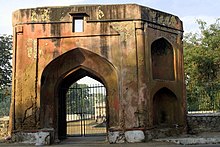
Mirza Shahab-ud-Din Baig Muhammad Khan Khurram, also known as Shah Jahan I, was the fifth Muslim emperor of the Mughal Empire, reigning from January 1628 until July 1658. Under his emperorship, the Mughals reached the peak of their architectural achievements and cultural glory.

Jahanara Begum was a Mughal princess and later the Padshah Begum of the Mughal Empire from 1631 to 1658 and again from 1668 until her death. She was the second and the eldest surviving child of Emperor Shah Jahan and Mumtaz Mahal.

Dara Shikoh, also known as Dara Shukoh, was the eldest son and heir-apparent of the Mughal emperor Shah Jahan. Dara was designated with the title Padshahzada-i-Buzurg Martaba and was favoured as a successor by his father and his elder sister, Princess Jahanara Begum. In the war of succession which ensued after Shah Jahan's illness in 1657, Dara was defeated by his younger brother Prince Muhiuddin. He was executed in 1659 on Aurangzeb's orders in a bitter struggle for the imperial throne.
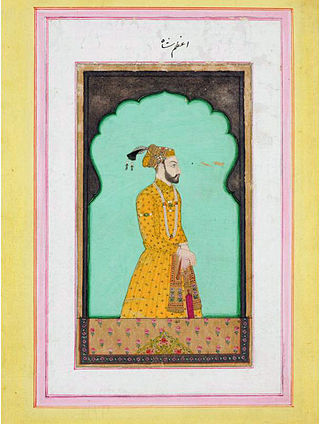
Mirza Qutb-ud-Din Muhammad Azam, commonly known as Azam Shah, was briefly the Mughal emperor who reigned from 14 March 1707 to 20 June 1707. He was the third son of the sixth Mughal emperor Aurangzeb and his chief consort Dilras Banu Begum.

Mughal architecture is the type of Indo-Islamic architecture developed by the Mughals in the 16th, 17th and 18th centuries throughout the ever-changing extent of their empire in the Indian subcontinent. It developed from the architectural styles of earlier Muslim dynasties in India and from Iranian and Central Asian architectural traditions, particularly Timurid architecture. It also further incorporated and syncretized influences from wider Indian architecture, especially during the reign of Akbar. Mughal buildings have a uniform pattern of structure and character, including large bulbous domes, slender minarets at the corners, massive halls, large vaulted gateways, and delicate ornamentation; examples of the style can be found in modern-day Afghanistan, Bangladesh, India and Pakistan.
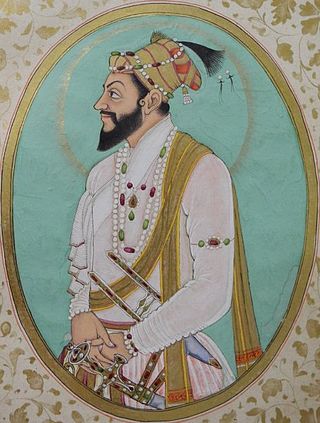
Mirza Shah Shuja was the second son of the Mughal Emperor Shah Jahan and Empress Mumtaz Mahal. He was the governor of Bengal and Odisha and had his capital at Dhaka, in present day Bangladesh.

Mirza Muhammad Murad Bakhsh (9 October 1624 – 14 December 1661) was a Mughal prince and the youngest surviving son of Mughal Emperor Shah Jahan and Empress Mumtaz Mahal. He was the Subahdar of Balkh, till he was replaced by his elder brother Aurangzeb in the year 1647.

Roshanara Begum ; 3 September 1617 – 11 September 1671) was a Mughal princess and the third daughter of Emperor Shah Jahan and his wife, Mumtaz Mahal. Roshanara was a brilliant woman and a talented poet. She was a partisan of her younger brother, Aurangzeb, and supported him during the war of succession which took place after Shah Jahan's illness in 1657. After Aurangzeb's accession to the throne in 1658, Roshanara was given the title of Padshah Begum by her brother and became the First Lady of the Mughal Empire, when she became a powerful political figure.
Gauhar Ara Begum was a Mughal princess and the fourteenth and youngest child of the Mughal emperor Shah Jahan and his wife Mumtaz Mahal.
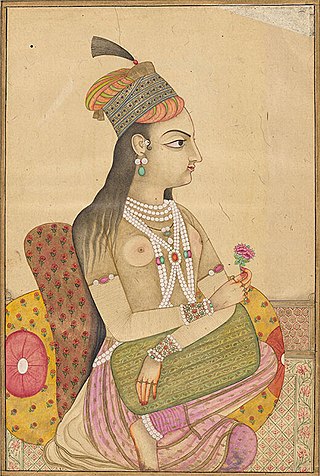
Zeb-un-Nissa was a Mughal princess and the eldest child of Emperor Aurangzeb and his chief consort, Dilras Banu Begum. She was also a poet, who wrote under the pseudonym of "Makhfi".

Khooni Darwaza, also referred to as Lal Darwaza was initially called as Kabuli Darwaza, The gate is located near Delhi Gate, on the Bahadur Shah Zafar Marg in Delhi, India. It is one of the 13 surviving gates in Delhi. It is just south of the fortified Old Delhi and was constructed by Sher Shah Suri.
Nadira Banu Begum was a Mughal princess and the wife of the Crown prince, Dara Shikoh, the eldest son and heir-apparent of the Mughal emperor Shah Jahan. After Aurangzeb's rise to power, Dara Shikoh's immediate family and supporters were in grave danger. Nadira died in 1659, a few months before her husband's execution, and was survived by two sons and a daughter.

Dilras Banu Begum was the first wife and chief consort of Emperor Aurangzeb, the sixth Mughal emperor. She is also known by her posthumous title, Rabia-ud-Durrani. The Bibi Ka Maqbara in Aurangabad, which bears a striking resemblance to the Taj Mahal, was commissioned by her husband to act as her final resting place.
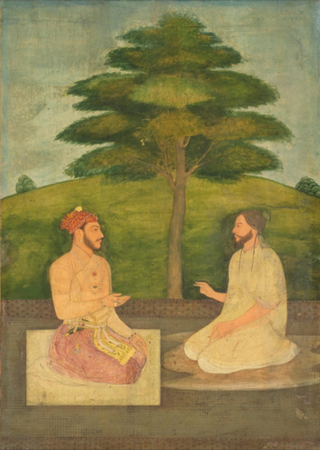
Mirza Sulaiman Shikoh was a Mughal prince and the eldest son of Crown prince Dara Shikoh. He was executed in May 1662 at Gwalior Fort on the orders of his paternal uncle, Emperor Aurangzeb.

Jahanzeb Banu Begum, popularly known as Jani Begum, was a Mughal princess and the chief consort of Muhammad Azam Shah, the heir-apparent to Emperor Aurangzeb, who briefly became Mughal emperor in 1707.

Rahmat-un-Nissa, better known by her title Nawab Bai, was a secondary wife of the Mughal emperor Aurangzeb. She gave birth to Aurangzeb's first two sons, including Bahadur Shah I, who became Mughal emperor in 1707. Nawab Bai was unpopular at the Mughal court and lost her husband's favour quite early on in her life while the misconduct of her sons, Muhammad Sultan and Muhammad Muazzam, embittered her latter life. She died in 1691 in Delhi after long years of separation from her husband and children.
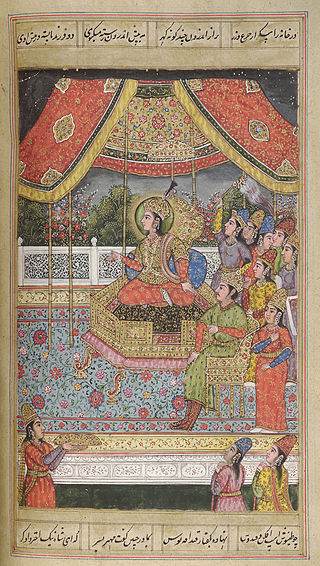
Badshah Begum was Empress consort of the Mughal Empire from 8 December 1721 to 6 April 1748 as the first wife and chief consort of the Mughal emperor Muhammad Shah. She is popularly known by her title Malika-uz-Zamani which was conferred upon her by her husband, immediately after their marriage.

Lal Bangla are two imperial late-Mughal mausoleums located in Delhi, India, that are that protected monument under the Archaeological Survey of India.

Padshah Begum was a superlative imperial title conferred upon the empress consort or 'First Lady' of the Mughal Empire and was considered to be the most important title in the Mughal harem or zenana. This title can be equivalent with "empress" in English, but in only approximate terms in the Mughal context.
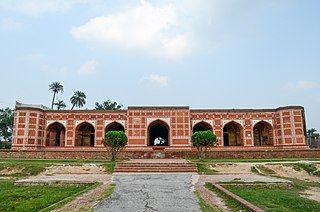
The Tomb of Nur Jahan is a 17th-century mausoleum in Lahore, Pakistan, that was built for the Mughal empress Nur Jahan. The tomb's marble was plundered during the Sikh era in 18th century for use at the Golden Temple in Amritsar. The red sandstone mausoleum, along with the nearby tomb of Jahangir, tomb of Asif Khan, and Akbari Sarai, forms part of an ensemble of Mughal monuments in Lahore's Shahdara Bagh.




